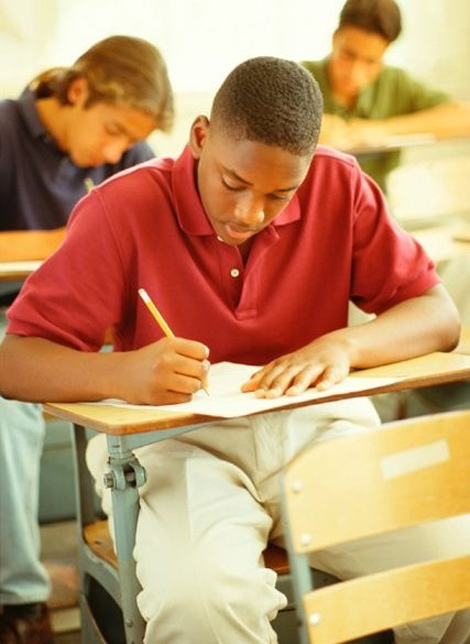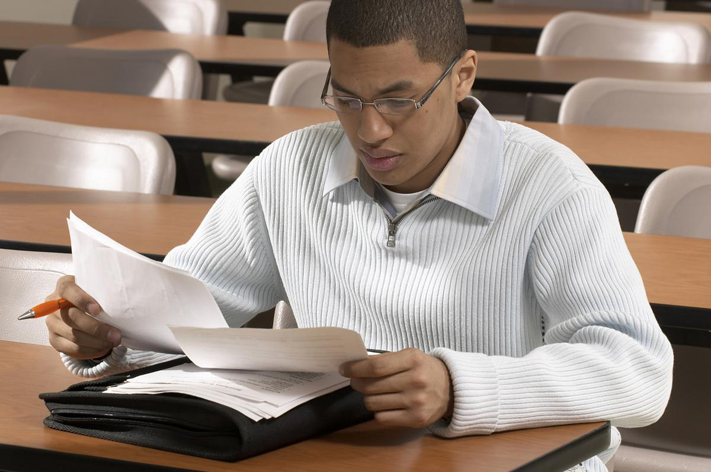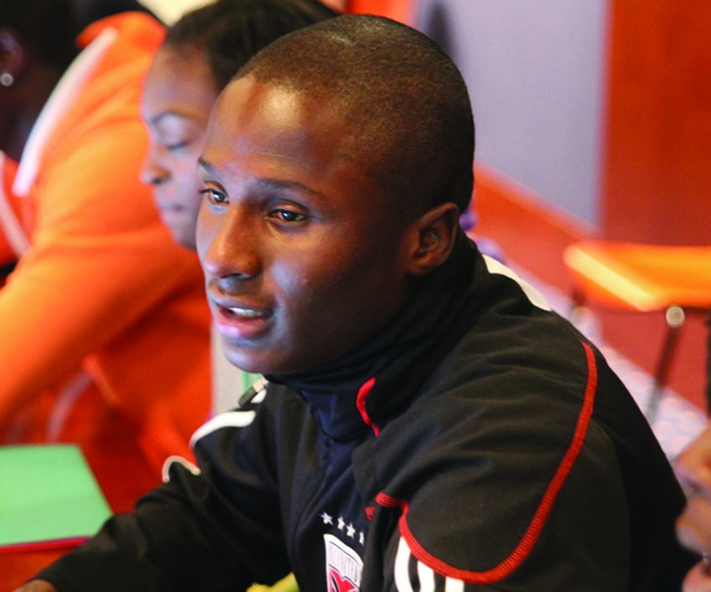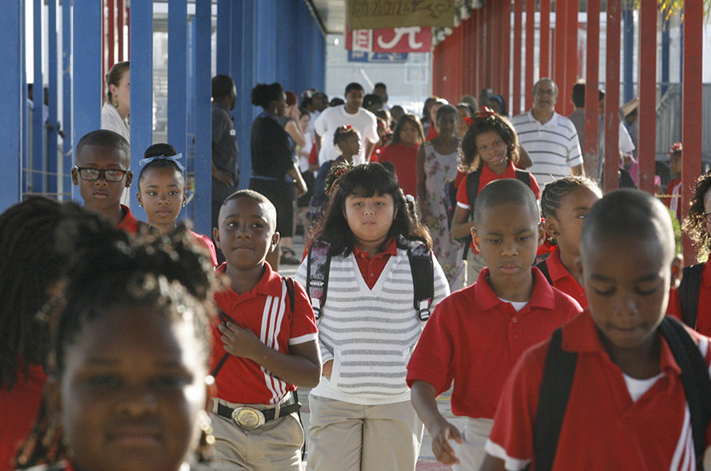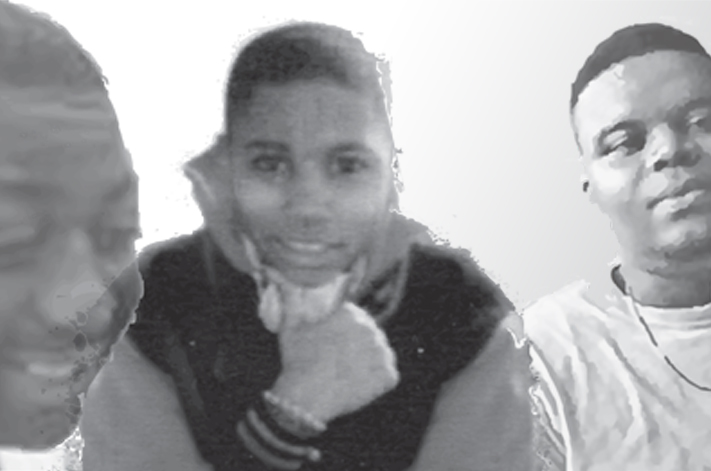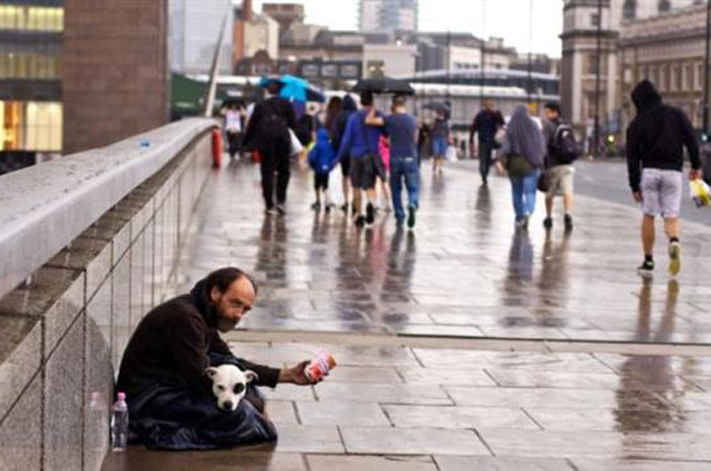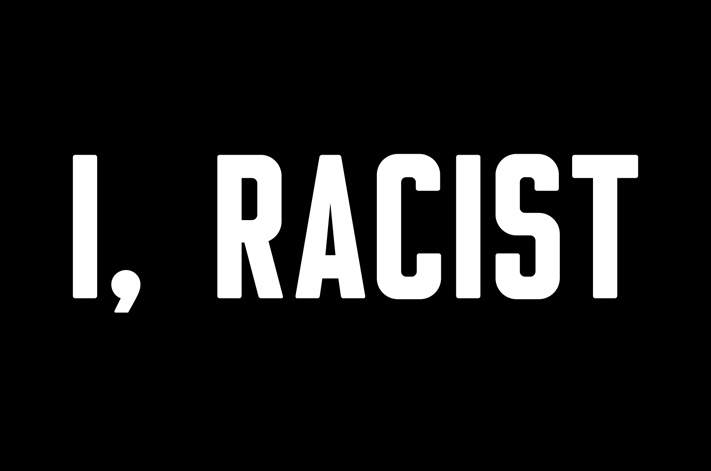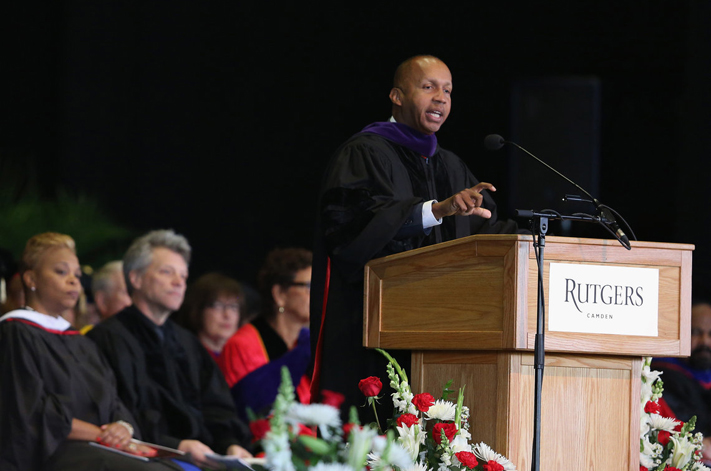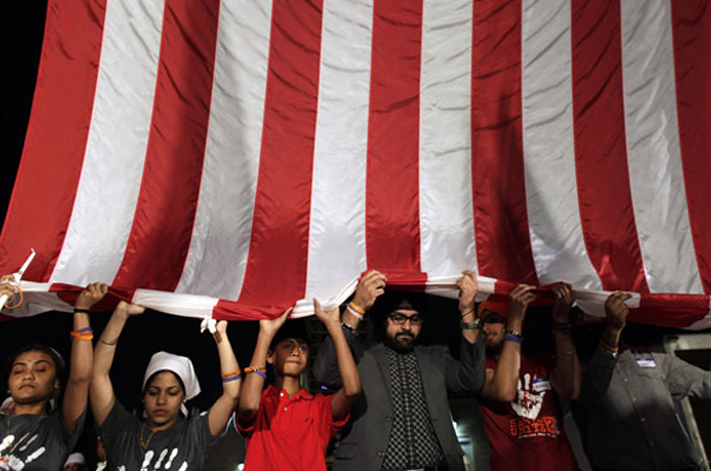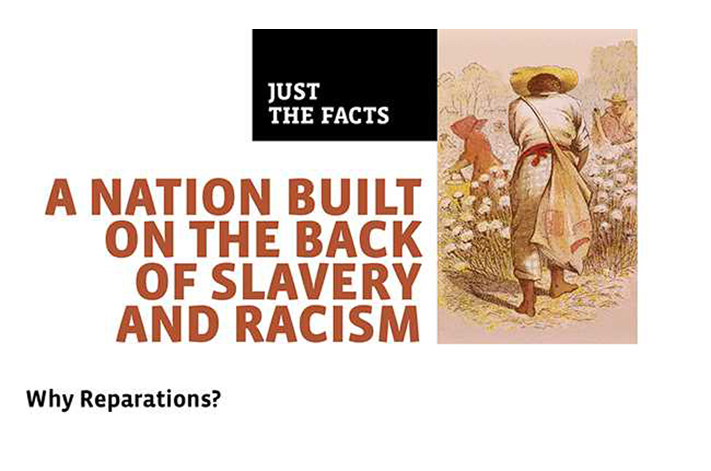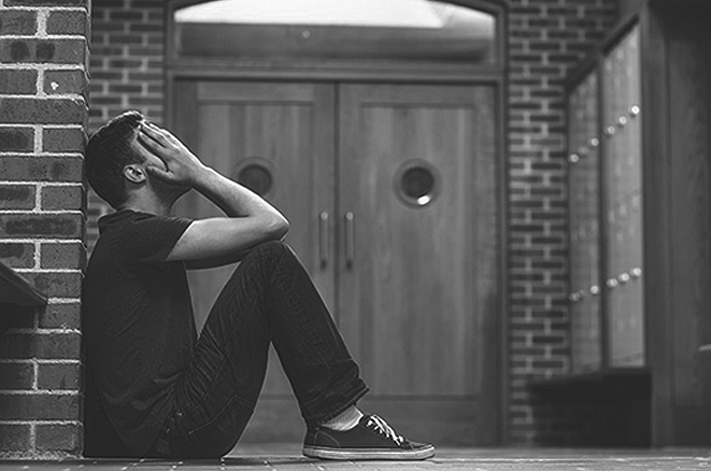9 Biggest Lies About Black Males and Academic Success
Editor's note: This weekend, Morehouse College hosted the inaugural summit in a White House-sponsored series of events aimed at addressing educational outcomes for African-American students. The Morehouse event, called the White House Initiative on Educational Excellence for African Americans: Addressing the Socio-Cultural Factors Impacting the Academic Achievement and Development of African American Males, focused on the future of African-American men.
One of the featured speakers was Ivory Toldson, who is deputy director of White House Initiatives on Historically Black Colleges and Universities, as well as a frequent contributor to The Root.
His Saturday speech to the conference, 'The State of African American Education Today,' is reprinted here.
By Ivory A. Toldson, Ph.D. | Originally Published at The Root. March 31, 2014
The state: Why can’t you be more like private schools?
Public school: What do you mean?
The state: I mean their kids are learning, well-behaved and go on to do great things when they finish school. Your kids don’t seem to be learning anything.
Public school: OK, I’ll see what I can do.
(After studying private schools) Public school: I got it! We will extend the lunch period and enhance physical education. We believe that happy learners are the best learners. We will de-emphasize learning drills and focus on activities that enrich our students’ learning experience. We will have them maintain gardens, engage in creative writing and participate in exercises that spur critical-thinking skills and instill a sense of agency.
Teachers will be encouraged to meet students where they are, but also set high expectations. Their first priority will be to set an atmosphere of care and respect. We will also locate every alumnus who has done anything positive with their lives and have them speak to our students.
We are also going to stop teaching to the test. We will work with scholars in our network to develop our own diagnostics, but we will essentially ignore the results of any state assessment. And we will never reveal any assessment scores to our students, because that leaves them vulnerable to low self-esteem. We will use the scores for internal purposes, only to enhance our curriculum—the scores of our tests, that is, not the ones that you’ve developed. No offense.
I believe these modifications will make us a lot more like private schools.
The state: You’re being noncompliant. I’m shutting you down.
Public school: I’m confused.
The state: Yes, you are confused. That’s why your kids aren’t learning anything. Why can’t you be more like private schools?
This satirical conversation between a public school and the state was meant to underscore the fact that differential standards for success can lead to disparate outcome, and certain regulations of public schools do not create an atmosphere that is conducive to learning. Not all private schools operate in the best interests of their students, and not all public schools are deficient. However, having a measure of freedom to exert creativity and innovation to meet the unique needs of learners from diverse circumstances is essential to educational progress.
Today, approximately 258,047 of the 4.1 million ninth graders in the United States are black males. Among them, about 23,000 are receiving special education services, and for nearly 46,000, a health care professional or school official has told them that they have at least one disability. If black male ninth graders follow current trends, about half of them will not graduate with their current ninth grade class (according to the Schott Foundation), about 20 percent will reach the age of 25 without obtaining a high school diploma or GED, 45 percent of black males will attempt college; however, only 16 percent obtain a bachelor’s degree by the age of 25 (according to the Annual Community Survey).
Recently, the Department of Education released the second wave of data from the Civil Rights Data Collection (pdf). The study suggests that opportunity gaps that exist between black and white males across the country center around three key areas: 1. Schools routinely offer black children a less rigorous curriculum that omit classes required for college admission; 2. Schools discipline black males more harshly by suspending them for behaviors (e.g. tardiness) that rarely result in suspensions among white males and 3. black students are the most likely to have the lowest paid teachers with the fewest years of classroom experience, and who become teachers through alternative teacher-certification programs.
Notwithstanding, most black males persist through high school. In a national survey conducted by the U.S. Department of Education, National Center for Education Statistics, 87 percent of black students who were in the ninth grade in 2009 were in the 11th grade by 2012. In addition, black students were more likely to advance ahead than fall behind or drop out.
Among students who dropped out of high school, 33 percent of black students left because they were suspended or expelled, compared to 19 percent for white students and 13 percent for Hispanic students. Typically, when we attempt to address the so-called “dropout crisis,” we focus on black students’ motivation for dropping out. Maybe we need to start focusing on schools’ intentions for putting them out.
Black males aspire to attend college at rates that exceed white and Hispanic males. About 64 percent of black high school males expect to eventually graduate from college. However, black students are behind their peers in the percent who are taking college preparatory classes. Fifty-three percent of Asian students, 24 percent of white students, 16 percent of Hispanic students and 12 percent of black students are taking pre-calculus or calculus by the 11th grade.
In general, the data presented often paints a bleak picture of the educational experiences of black males in school and the circumstances that frame their experiences. This image is reinforced by the language we too often use when we assess the living conditions of black males in urban areas. Phrases like “crime-ridden,” “broken homes” and “drug-infested” are catch-all phrases that each contribute to a myriad of deficit-oriented viewpoints that, in effect, condemn the families and communities that are entrusted with shaping the lives of black male youth.
]n order to promote their academic success and well-being, there is a need to delve deeper in to the data, as well as go beyond the data to understand the various ways in which young black males are surviving, thriving and demonstrating a level of resilience belied by popular statistics. We also have to do a better job of vetting the data to make sure they are true.
The following are a few of the greatest lies ever told about black males:
1. There are more black men in prison than in college.
Today there are approximately 600,000 more black men in college than in jail, and the best research evidence suggests that the line was never true to begin with.
Read more.
2. Black boys can’t read.
Before blindly accepting reports that less than a fifth of black boys (and less than half of white boys) can read, learn about the NAEP, take a practice test and learn about diverse learning styles.
Read more.
3. Black youth of today are more violent than any generation in history.
Today, the rate of violence among black youth is slightly less than it was before 1980 and less than half the rate that it was in the 1990s.
Read more.
4. One third of black boys will serve time in prison.
One in three black men
will go to prison because a white man named Thomas P. Bonczar’s “
double-decrement life table” (pdf) said they will. Actually, Dr. Bonczar was only referring to black males born in 2001. They were 2 years old when he predicted it. They are 12 years old now. So far, they are far from the “super predators” we forecasted them to be.
5. Black boys are at a natural disadvantage because most are from single-parent households.
As a single variable, household composition carries little weight and appears to serve as a proxy for more serious issues, such as teenage pregnancy and incarcerated parents. A myriad of co-variants (e.g. parents’ education and parent practices) nullify the effects of household composition on academic progress.
Read more and
more.
6. Black students purposefully underachieve because they associate being smart with acting white.
Consistent across decades of survey research, black students demonstrate more positive attitudes about education than their white student peers.
Read more.
7. Black males are avoiding the teaching profession.
Primary school teacher is the No. 1 profession of college-educated black men and No. 3 for white men. Secondary school teacher is No. 5 for black men and No. 14 for white men. Educational administrator is No. 6 for black men and No. 20 for white men and counselor is No. 7 for black men and No. 40 for white men.
Read more.
8. Black men are underrepresented in institutions of higher education.
The nation’s 12.7 million black men 18 years old and older make up 5.5 percent of the adult population, and 1.2 million black male college students make up 5.5 percent of all college students. By contrast, white males are 32.7 percent of the adult population and 27 percent of college students.
Read more.
9. Black men are a “dying breed.”
According to census figures, since 1980, there has been a 19.9 percent increase in the total number of black men age 15 to 25 in the U.S. population. By contrast, there has been a 22.5 percent decrease in the total number of white men age 15 to 25 in the U.S. population.
This list does not suggest that no problems exist in the black community. However, the problems have everything to do with system inequities, not cultural pathology. We need to understand the true nature of the issues before we can begin to resolve them. “Don’t cut off my foot, if my problem is a hole in the bottom of my shoe.”
Instead of focusing on numbers that produce sensational sound bites, we need to focus on the numbers that count for a good education for black males.
1. Four and four units of math and science:
For a school to prepare students for the most competitive colleges and universities, they need to offer four units of math and four units of science. As a minimum standard, in
Challenge the Status Quo: Academic Success for School-Age Black Males (CTSQ) (pdf) we recommend
PREPS (Public Reciprocity for Education for Postsecondary Success). In other words, every high school should offer a curriculum that, at a minimum, meets the admissions requirements for the most competitive public university of the state. The widespread
practice of public schools omitting classes required for public college admissions should be a violation of federal law. Immediately, individual schools and their governing school districts should provide a disclosure statement to students’ parents and guardians, which specifies any courses required for admissions to the most competitive public universities of the state, which are not available in their curriculum. The disclosure statement should also provide educational options for students to access the necessary courses within the school district.
The mean grade-point average of all students, regardless of race and gender, is a 3.0, according to the
High School Transcript Study. In my
Breaking Barriers research, I’ve found that a school’s collective GPA is a good measure of a myriad of positive outcomes, including reduced violence and increased college enrolment. Many schools with the worst problems have a composite GPA that is closer to a 2.0, and the students in their 90th percentile barely have a 3.0. Many school leaders do not regularly monitor their collective GPA because, unlike standardized test scores, it is not required by law. Every school should publish their composite GPA and make 3.0, or better, a benchmark of success. If the school has a composite GPA that is less than 3.0, they should have specific strategies to raise standards. One strategy could be the lifting tides approach, whereby a school gathers all students in the top quartile and challenge them to raise the bar. At the same time, provide learning supports and curriculum enhancement to other students.
3. Twenty-five percent or more black students in honors classes:
Nationwide, 25 percent of high school students are enrolled in honors classes, according to the
High School Longitudinal Survey. Thirty-three percent of white females take those types of courses, while it’s 27 percent for white males, 22 percent for black females and 15 percent for black males. For a school to make adequate progress toward educating black children, they should offer them access to honors classes that meet or exceed honors class enrollment for all students nationally.
4. Six percent or fewer black students in special education:
Nationwide, 6 percent of high school students are in special education. Our research in CTSQ demonstrates that black males are the most likely to be placed in special education, even in the absence of a learning or behavioral disorder. We also demonstrate that, in the right academic environment, even black males with disabilities can end up in honors classes. Adequate strides toward educating black children require that schools eliminate the biases related to assigning black males to special education, and make a commitment to reducing the representation of black males in special education to be at or below the national average for all students.
5. Five percent or fewer black students have ever been suspended:
No school can make adequate progress, unless they suspend students at a rate that is less than the national average for all students. In CTSQ we calculated the national suspension rate for all students at 10 percent, and 26 percent for black males, based on the
High School Longitudinal Survey. However, after speaking with a variety of experts, I recommend that the benchmark for schools should be no more than 5 percent of students suspended. They based this number on very extensive analyses that revealed that racial disparities in suspensions were so pervasive that a fair benchmark should only consider the rate of suspensions among white students. To address this, U.S. Departments of Education and Justice released a school discipline
guidance package to enhance school climate and improve school discipline policies/practices
6. One hundred percent of students involved in extracurricular activities:
Schools should work to have nearly 100 percent of their students involved in extracurricular activities. In my first
Breaking Barriers (pdf) report, I find that extracurricular activities promote skills and values that foster a sense of attachment, commitment and responsibility to the school. Implementing more extracurricular activities, particularly those that instill school pride, appreciation of art and culture and academic identity, can increase school performance and reduce violence at the school. Unfortunately, when I ask school leaders, “What percent of your students are involved in an extracurricular activity?” the typical response is, “I don’t know.” Every school should take a homeroom survey of their students’ participation in extracurricular activities. In cases where the participation rate is low, the school should have targeted initiatives to increase involvement. Specific examples of school activities are sports teams, band, orchestra, performing arts, debate teams, honor societies, foreign language clubs, math clubs and computers and robotics clubs.
Almost two years ago, The Root invited me to produce an education column called “Show Me the Numbers.” In this speech, I presented the numbers that count and the numbers that deceived. But none of these numbers matter if people of good conscience do not use them to act. When releasing the first CRDC’s report, U.S. Department of Education Secretary Arne Duncan expressed this best when he said, “The real power of the data is not only the truth behind the numbers, but in the impact that it can have when married with courage and will to challenge the status quo.”
Ivory A. Toldson, Ph.D., is a tenured associate professor at Howard University, which is an HBCU. He is also senior research analyst for the Congressional Black Caucus Foundation, editor-in-chief of the Journal of Negro Education and contributing education editor for The Root. He can be contacted at itoldson@howard.edu. Follow him on Twitter.
This piece was reprinted by EmpathyEducates with permission or license. We thank the Author Ivory A. Toldson, Ph.D. and The Root.
